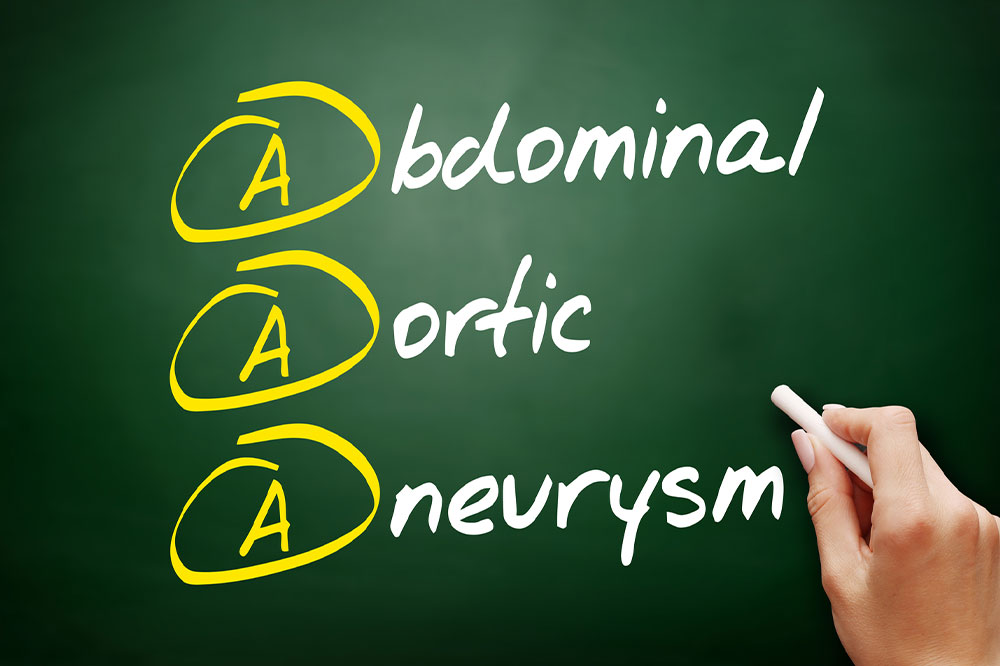
What is an abdominal aortic aneurysm
The aorta is the large artery at the end of the heart’s aortic valve. It is responsible for carrying oxygenated blood from the heart to regions like the abdomen (where it is called the abdominal aorta). An abdominal aortic aneurysm (AAA) occurs when the lower portion of the aorta develops a bulge. It can cause the blood vessel wall to rupture and trigger severe bleeding. Here is an overview of the condition.
Causes of abdominal aortic aneurysms
Healthcare experts have not yet pinpointed the exact cause of the disease. But studies show that the following factors contribute to its development:
Vascular inflammation
Inflammation in the aorta and other arteries may sometimes lead to swelling in the abdominal aorta. Aneurysms may also develop in other blood vessels in the body.
High blood pressure
An increase in blood pressure can weaken the aorta walls, causing them to rupture in some cases.
Trauma
People affected by trauma might be susceptible to abdominal aortic aneurysms. A car accident is one example that may lead to such trauma.
Atherosclerosis
Atherosclerosis results from the buildup of fat and other substances on the lining of the blood vessels. It may harden the arteries and lead to an aortic aneurysm.
Aorta infections
A fungal or bacterial infection may put one at risk of developing the disease.
Risk factors of abdominal aortic aneurysms
Some factors may increase the risk of developing the disease. The risk factors to be aware of include:
Age
White men over 65 years of age are at a higher risk of developing abdominal aortic aneurysms. Women over 70 may also be affected by the condition.
Gender
Males are at a higher risk of developing an aneurysm in the abdominal aorta as compared to females.
Genetics
A child may develop an abdominal aortic aneurysm if their family members, such as a parent or a relative, are affected by the condition.
Other aneurysms
A person with aneurysms in other areas, such as the large blood vessel (the aorta in the chest), is at an increased risk of an abdominal aortic aneurysm.
Symptoms of abdominal aortic aneurysms
The symptoms often go unnoticed until the aneurysm is about to rupture. One usually experiences a throbbing sensation in the belly and chronic pain in the back, leg, or abdomen. If the abdominal aorta explodes, one may experience fainting, sweaty skin, nausea, shortness of breath, vomiting, and a fast-beating heart.
Diagnosis of an abdominal aortic aneurysm
A doctor may conduct a chest X-ray or an abdominal MRI to diagnose any abnormalities in the body. But, the primary methods preferred for diagnosing an unruptured aneurysm include:
Abdominal ultrasound
The abdominal ultrasound is a painless technique that uses sound waves to create real-time images of the inside of the belly. It is conducted quickly and helps doctors identify potential aneurysms.
Computed tomography angiography (CTA)
A computed tomography angiography test is recommended if the doctor notices an aneurysm on the ultrasound. The patient is intravenously administered a contrast dye before the CT scan. The angiography allows the doctor to pinpoint the exact location, size, and how dangerous the aneurysm is.
Treatments for an abdominal aortic aneurysm
The treatment methods depend on multiple factors, such as the individual’s overall health, the growth rate of the abnormality, its precise location, and the type of aneurysm. The primary treatments are:
Monitoring
Sometimes, the aneurysm does not require surgery right away. If it is less than 5.5 centimeters wide, doctors prefer monitoring the growth via imaging tests every few months.
Open abdominal surgery
In open abdominal surgery, the surgeon removes the damaged regions of the aorta. The surgery is invasive and may also increase one’s recovery time. However, it is ideal for those with a large aneurysm or one that has ruptured.
Endovascular surgery
The treatment is less invasive than open abdominal surgery. During an endovascular surgery, the healthcare provider uses a graft to stabilize the weakened walls of the aorta.
Prevention tips for abdominal aortic aneurysms
Doctors recommend a few methods to prevent an aortic aneurysm or keep an existing one from rupturing. The methods to consider are:
Eating healthy
Patients must eat healthy meals, such as fruits, vegetables, poultry, fish, low-fat dairy products, and grains.
Exercise
Individuals must participate in at least two to three hours of moderate aerobic activities a week.
Monitor blood pressure
Monitoring blood pressure and cholesterol levels can also help reduce the risk of AAA.
Those who experience the symptoms of an abdominal aortic aneurysm must visit a doctor immediately to avoid complications. A ruptured aneurysm or a tear in one or more layers of the aorta wall are two severe complications. Ruptures might result in internal bleeding that can be life-threatening. The risk of an aortic rupture depends on how fast an aneurysm grows and how large it becomes.




